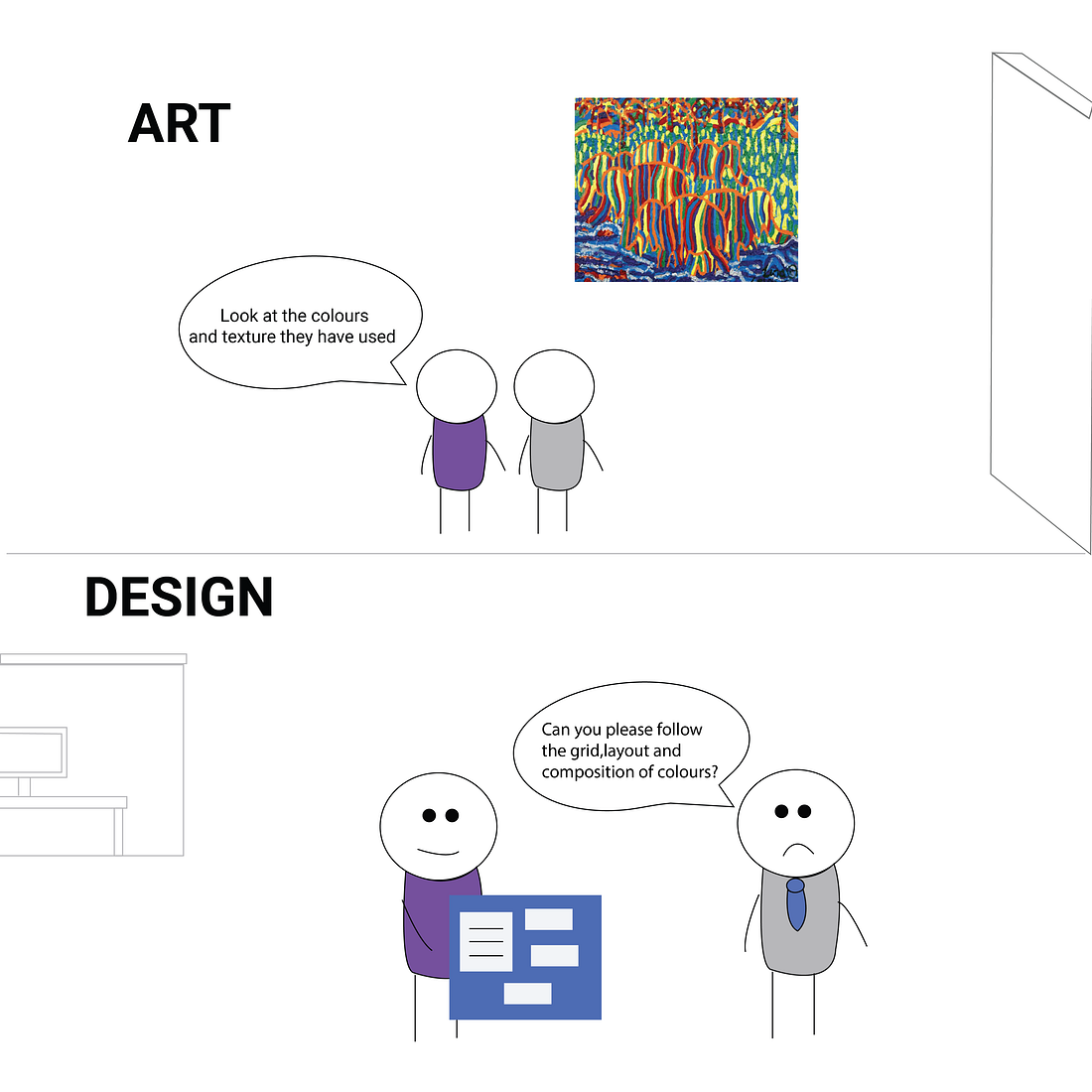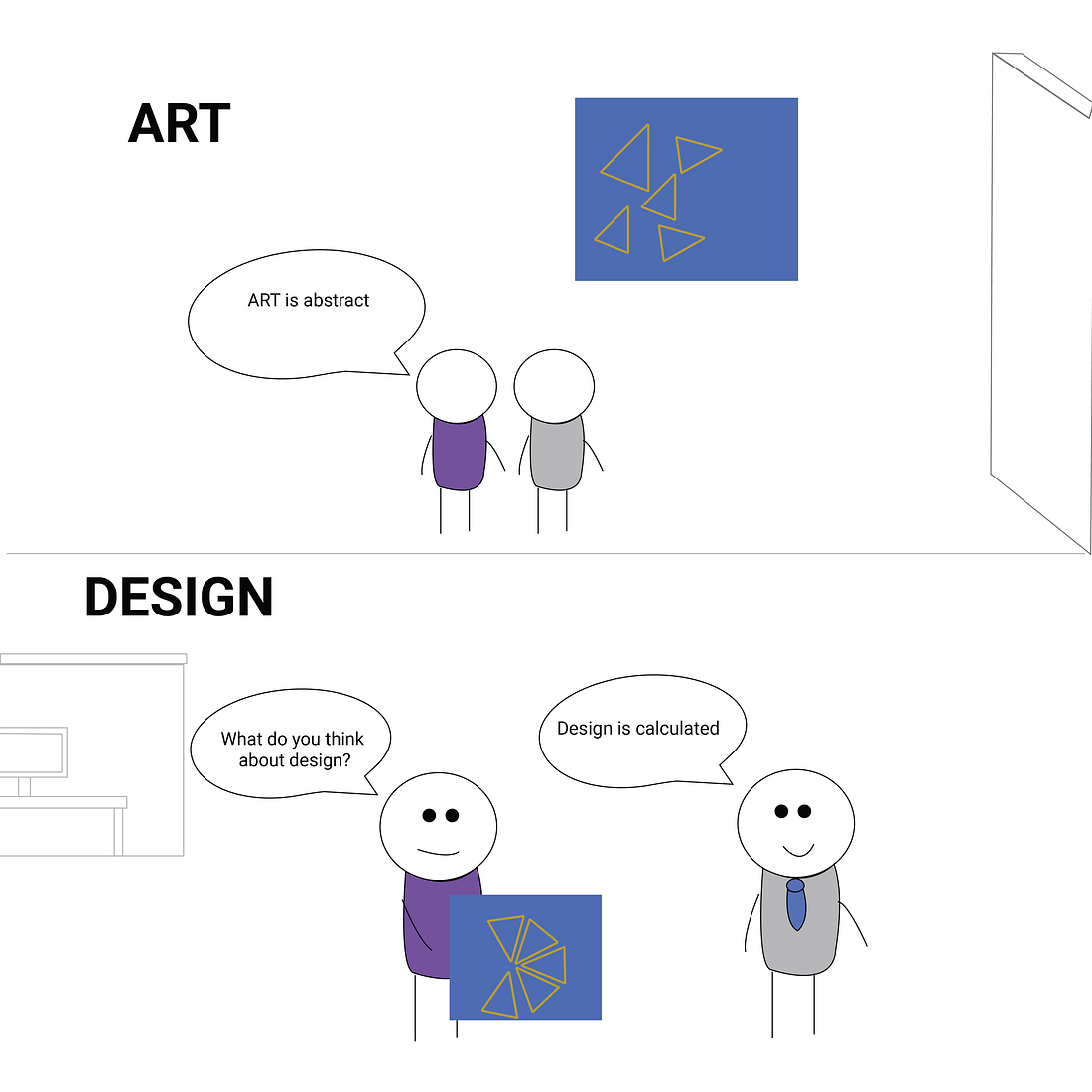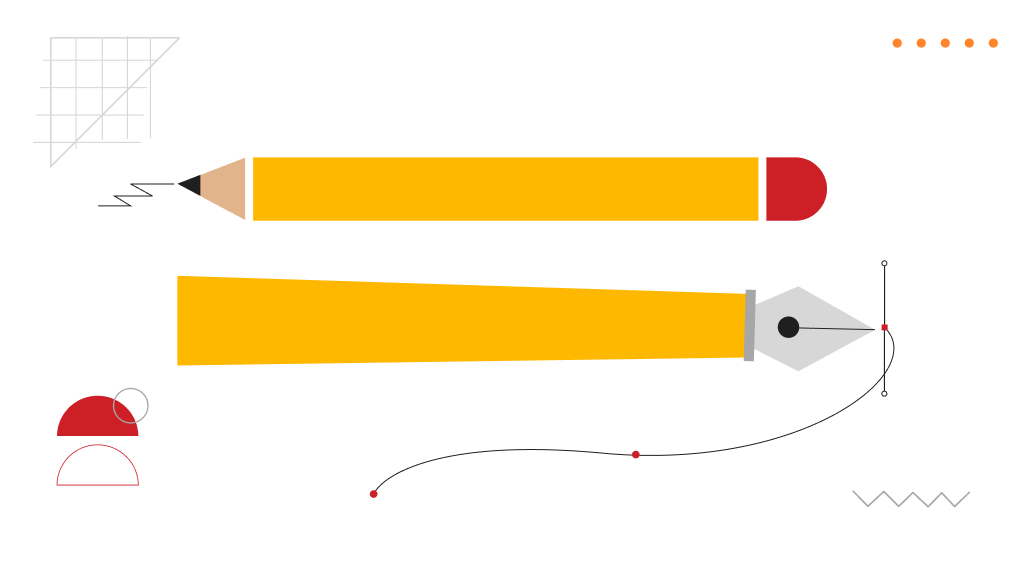Many designers are artists and many artists are designers, the line between the two is complex and interesting. Artists and designers both create visual compositions using a shared knowledge base, but their reasons for doing so are entirely different. The field of UX UI Design has been gaining a lot of traction because of the value which UX UI Designers are providing to companies in solving complex problems. We’ll see in this article, what are the differences between artists and designers who are specially working on digital products. The process of an artist starts with nothing, a blank canvas. A work of art stems from a view or opinion or feeling that the artist holds within him or herself. By contrast, when a designer sets out to create a new piece, they almost always have a fixed starting point, whether a message, an image, an idea, or an action or a problem itself to be solved. The designer’s job isn’t to invent something, but to communicate something that already exists, for a purpose. (These are called Communication Designers). The word Design is often confused by people as something which looks beautiful or fancy only. Design is not just about how it looks, but also how it works. This might seem obvious and common sense, but when we are asked to design something we might often lose track of it and get in the sprial of just making things look good, but not work on making it really work for users well. Designers who solve problems are generally called as UX UI Designers. Though communication designers also solve problems, they are solving it through communicating a message in a more clear way to their audiences.

Art asks questions, Design answers them

The design is there to fill a need. Art fills no need except its own internal need to exist and challenge the viewer. That’s not a bad thing, by the way. Art is one of the fundamental building blocks of human culture; every culture that has ever existed has its own unique art forms that they leave behind for future generations. Art inspires wonder and awe. When you look at a painting, sculpture, collage, or installation, your mind starts to churn and you get inspired to ponder all the endless possibilities that have now been introduced to you by the artist and her/his work. “Ah, the magic of art. What an exhilarating, deeply fulfilling experience.” Designers have no time for that. If people are in awe of your design, that’s cool, but it’s not the main reason you created it. You design to make people’s lives better in ways they don’t necessarily see or appreciate, but without which they would be lost. Artist and art lover clicking picture in a museum of Frida Kahlo will not pay attention to their camera apps, but the designer who created it plays a very important role in allowing them to share their experience with their friends. Art has no process that can be repeated across the board to achieve the greatest result. There are no rules. At all. There used to be rules about who could paint what, but all of those got dumped with the rise of modernism. However, there are rules in design, there is an underlying structure there that solves a problem. There are physical rules of design: the grid, the color wheel, the rules of composition, and layout in User Interface Design. Then there are the rules about what the design is supposed to do. What problem are you solving? Is it ergonomic enough? What will the psychological response of the average user be to this particular arrangement of design elements? Will it cause them distress, or will they have a good experience? These are all rules that designers must take into account if they are to create a successful design. These types of rules may make an artist break out in a rash. But not us designers. Art and design are in the eye of the viewer. You can find beauty and art in design all the time. You can find a well-executed design project that is artful. So take a minute before you judge, and allow art and design to coexist. Design has various specializations such as User Experience Design, Visual Communications Design, Interior Design, Product Design, Design Management, but the fundamental thing to remember is that as a designer in general you are solving problems and are hired by companies to solve problems and provide value to businesses. For the same, you need to follow Design Thinking Process, to know more about Design Thinking, read this article.

Art and Design both vast topics. Designerrs Lab provides a safe learning space for designers across the world. We are trying to make design education accessible for everyone by providing learning experiences and training programs for User Experience and User Interface Design, Design Thinking, Interaction Design, Visual Design, Designing for Immersive Experience (VR, AR, XR), Voice UX, and other specializations. Our learning pedagogy involves Hands-on activities, Live projects, Gamified teaching methods, and curriculums designed by our learning experience design team under the guidance of experts from the industry such as Samsung, Microsoft, Google, Cisco, Byjus, Thoughtworks, and alumni from NIDs and IITs. Our 15K + Community consists of students and professionals from various backgrounds such as Product Design, Product Management, Product Marketing, Engineering, Business Management, HR, Sales, Retail who want to move to more creative career paths. With a vision to “Democratise Design Education”, we are focused on creating the Next Million Designers and help them become better problem solvers.
